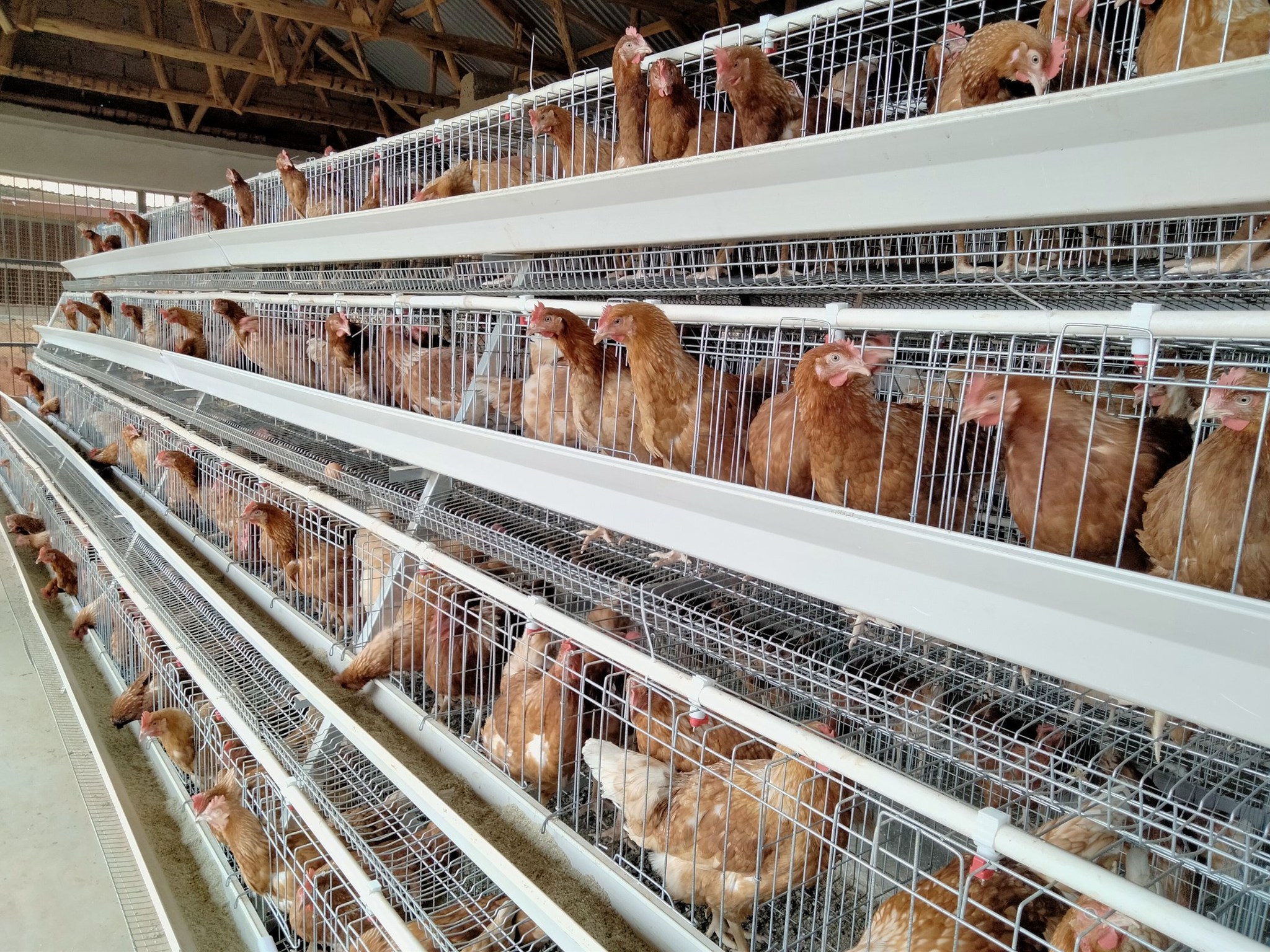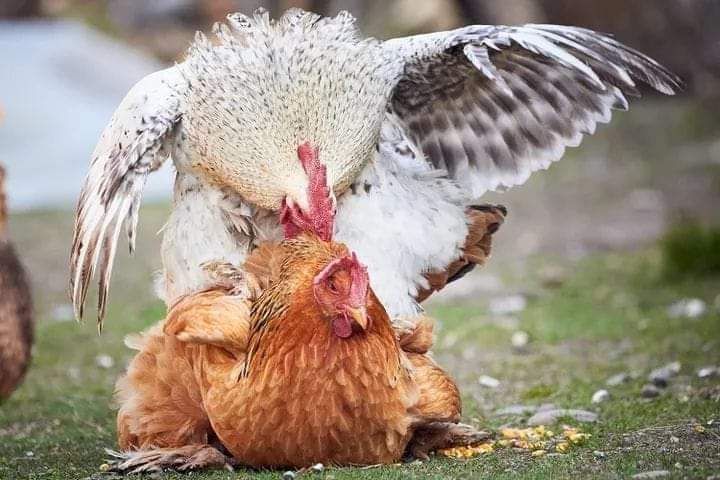THE ADVANTAGES Of THE OPEN HOUSE BATTERY CAGE SYSTEM
The term “open house battery cage system” describes a housing setup used in the production of commercial eggs. It is distinguished by a huge, open structure with numerous tiers of vertically piled wire cages. These contain egg-laying hens and only have enough room for one bird per cage. With automated systems for feeding, watering, and egg collection, the open house design allows for natural lighting and ventilation.
Because of worries regarding the wellbeing of the animals, the usage of battery cage systems has generated considerable criticism. Critics contend that the chickens’ limited movement in the small, wire cages prevents them from exhibiting normal behaviors and living a suitable quality of life. These worries have prompted demands for better housing conditions and the introduction of substitute systems that put animal welfare first.
Overview of Battery Cage Systems
In the commercial egg production sector, battery cage systems are a prevalent housing option. Individual chickens are contained in little wire cages in these setups. Long rows of cages with numerous layers piled vertically are usual. The major purpose of battery cage systems is to enhance egg production efficiency by providing a regulated and streamlined environment.
Battery cage systems were once commonly used because of their capacity to house a high number of chickens in a relatively small space. This density enabled improved egg production as well as more efficient management procedures. The convenience of automated feeding, watering, and egg collecting contributed to their appeal among commercial egg producers.
Despite being widely used, battery cage systems have come under heavy fire for their poor treatment of animals. Because the cages are so tiny, the chickens are unable to move freely and cannot engage in activities like perching, nesting, or dust bathing. Physical discomfort, stress, and a higher chance of developing health problems might result from the cramped quarters and desolate surroundings. Concerns have also been expressed regarding the chickens’ feet and legs developing issues due to the wire flooring.
As a result, discussions and laws aimed at improving the circumstances for laying hens in commercial egg production have been sparked by the welfare implications of battery cage systems. Alternative housing systems with greater room and enriched environments have been created and adopted in response to the need to address these welfare problems.
Characteristics of the Open House Battery Cage System
The open building layout of the open house battery cage system defines it. The open home design has a big, open structure in contrast to certain other housing systems that could be more segmented or confined. The building’s interior is spacious because to its design, which also encourages ventilation and natural light.
The battery cage system’s open house construction structure
Typically, the open house battery cage system consists of a one-story structure with tall ceilings. Steel is frequently used to build the framework, which offers a roomy setting for holding the stacked battery cages. The open building layout promotes movement inside the facility and provides efficient air circulation.
Benefits of natural lighting in open house battery cage system
The incorporation of natural illumination is one benefit of the open home battery cage technology. Because of the building’s open design, sunlight can penetrate, exposing the chickens to natural light. Natural illumination has been linked to advantages for the chickens’ behavior, wellbeing, and general health. Additionally, it makes the workplace more enjoyable for farm workers.
The open chicken house design incorporates ventilation and circulation
The open-house battery cage arrangement encourages effective circulation and ventilation. The facility’s open building design allows for the free flow of fresh air, guaranteeing sufficient ventilation and preserving acceptable air quality. For temperature management, lowering ammonia levels, and decreasing the danger of respiratory problems for both the hens and humans, enough ventilation is essential.
Accessibility for workers of open chicken house
The open house design of the system enhances accessibility for workers. With the stacked layout of the battery cages, there are clear aisles between rows, allowing for easy movement and access to individual cages. This accessibility facilitates daily tasks such as feeding, watering, egg collection, and routine maintenance or inspections. Workers can navigate the aisles comfortably and efficiently attend to the needs of the hens.
The open house battery cage system’s characteristics, including the open building structure, natural lighting, ventilation, and accessibility, contribute to its functionality and practicality for commercial egg production. While these aspects offer certain advantages, it is important to recognize that they do not directly address the welfare concerns associated with the confined space and lack of behavioral enrichment within the cages themselves.
Advantages of the Open House Battery Cage System
1. Space efficiency due to vertical stacking
Through vertical stacking, the open house battery cage method significantly improves space economy. A greater number of chickens may be kept in a structure with a relatively modest footprint by making advantage of the vertical space within it. This allows for higher egg production without increasing the facility’s physical footprint, which is especially helpful in areas with limited land availability.
2. Possibilities for illness prevention with better ventilation
The battery cage system’s open home design promotes better ventilation, which may help with disease control. The open building design and sufficient ventilation lower the possibility of an airborne infection accumulation. By reducing the transmission of disease and enhancing the hens’ general health, effective ventilation helps to create a healthier environment.
3. Protection against predation and contact with wild birds
The confinement provided by the open home system’s battery cages protects against predation and limits contact with wild birds. The enclosed enclosure decreases the possibility of predator attacks from foxes, raccoons, or birds of prey, ensuring the hens’ protection. Furthermore, the regulated environment reduces the possibility of disease transmission between flock and wild bird populations, reducing the risk of avian diseases.
4. Efficient management through automated systems and layout
The open home battery cage system integrates automated systems and a carefully planned architecture to assist effective administration. Automated feeding and watering systems simplify everyday tasks while assuring the chickens’ constant access to both. Automated egg collection systems also make it easier to remove eggs from cages, which lowers labor costs and boosts production. Clear passageways between rows of cages in the system’s structure allow for easy worker mobility and access, enhancing their ability to perform activities like inspections, maintenance, and hen care.
The open house battery cage system has historically been used widely because to its benefits, which include space efficiency, potential disease control benefits, protection against predation, and efficient administration through automated systems and architecture. However, it is important to take into account the welfare issues with battery cages and the growing emphasis on alternate housing systems that put animal wellbeing first in the production of commercial eggs.
In conclusion, a frequent housing strategy in the production of commercial eggs is the open house battery cage system. It is a large, open structure with wire cages holding chickens captive arranged vertically. The system has benefits including increased space efficiency, the ability to reduce illness, protection from predators, and effective management through automation. But it’s crucial to understand that this technique also presents welfare difficulties because of the restricted area, lack of behavioral stimulation, and potential health problems related to the confinement of chickens in little wire cages.





